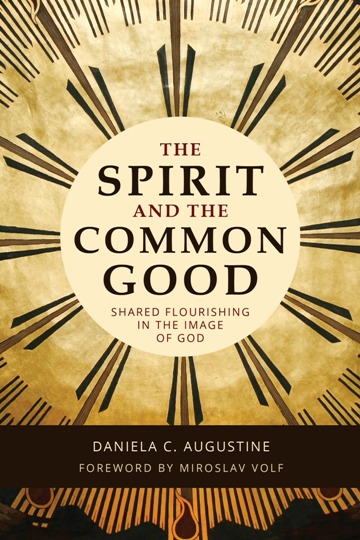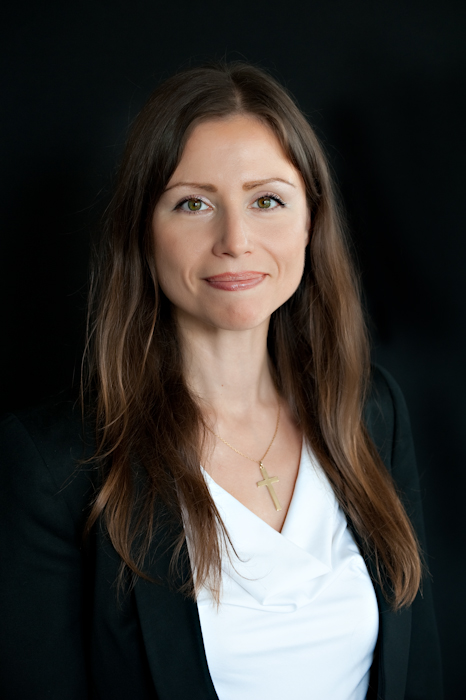| September 20, 2020 |
no comments
 Daniela C. Augustine, The Spirit and the Common Good: Shared Flourishing in the Image of God (Grand Rapids: Eerdmans, 2019), 272 pages, ISBN 9780802843852.
Daniela C. Augustine, The Spirit and the Common Good: Shared Flourishing in the Image of God (Grand Rapids: Eerdmans, 2019), 272 pages, ISBN 9780802843852.
It is easy to agree that human beings are created in the image of God. More debate may arise if we widen the idea to say that humankind as a whole—humanity if you will—reflects the divine image. The difference between the two may be described as the primary focus of the kind of public theology that forms the subject of Daniela Augustine’s book. As the title suggests, she offers a vision of shared flourishing in the image of God that focuses on how God’s Spirit leads humanity to the common good. In her own terms, she pursues the question how a market-shaped world can be mended by the common good in the Spirit’s activity. This task leads through the question how we can get from the common image to the common good (Chapter 1) and how we turn from a world of violence that destroys God’s image to a life that reflects the new creation (Chapter 2). The way to answer these questions leads trough rather unusual terrain for Pentecostals: the recovery of the Eucharist as a sacrament of the divine presence in the realm of economics (Chapter 3) and the experience of forgiveness and reconciliation in the agency of the Spirit (Chapter 4). The book concludes with reflections on how Christians make this agency visible and what moral imperatives are gained for a concrete living community.
Augustine’s unusual repertoire for this volume comes from field work with the Pentecostal community in Eastern Slavonia and religion’s role in the transformation of postwar civil society. Augustine argues that “due to their historical neutrality in the conflict, the Pentecostals were uniquely positioned to provide safe space for social healing and facilitate reconciliation among the warring (Orthodox, Catholic, and Muslim) factions” (p. 5). This research provides the backdrop for writing a narrative of the human agency that contributes to the healing and flourishing of life, a hagiography, in the terms of the Christian traditions, or in Augustine’s contemporary terms, a narrative of “the socio-transformative capacity of the saints’ lives as pneumatic embodiment of the world’s eschatological future” (p. 7). That this imagery and vocabulary is not usual for Pentecostal discourse, especially in the West, and the application of this “ancient” Christian tradition, particularly with resources from Eastern Orthodoxy, to contemporary concerns for peace, justice, and forgiveness, on the one hand, and to economics and human flourishing, on the other, make this book both a constructive and creative as well as a challenging read.
How can a market-shaped world be mended by the common good in the Spirit’s activity?
The overall pneumatological vision of the book is presented in the first chapter culminating in the trinitarian image of God animated in the Spirit-filled church at Pentecost. Augustine is interested in how the Spirit’s agency in the charismatic community allows not only for an imaging of God but also for human world-making in the light of that image: The Spirit makes the divine community visible in the cosmos. In stark contrast, the second chapter examines the causes of violence against others and portrays these as an iconoclasm—a violence ultimately against God’s image in the other. The chapter traces this violence from the first account of fratricide in Genesis through the biblical correlation between violence and “limited goods” to a call for responsibility for others in a violent world. The account shows the loss of markers in the material cosmos that identify the human community as the icon of the triune God. In response, God interrupts the cycle of violence in the paschal suffering of Christ who is the icon of God. The church is called to embody this icon in any act of kenosis and ascesis (self-giving, giving away, and for-giving) as a Christoforming act. That this transformation of the self and the other has a spiritual base yet is embodied in the material world is portrayed in the third chapter with a contrast of the devastating consequences of unrestrained consumerism and the call for a pedagogy of disciplining the desires of consumption. Augustine combines the Orthodox vision of the Eucharist with Pentecostal themes of holiness and moral responsibility. The Eucharist is not only the place where the church articulates, anticipates, and experiences the union with Christ and a transformed humanity (anamnesis) but also a Christoforming work, discipline, or passage, which challenges the dominant economic spirituality of the world: “The contrast between Pentecost’s economics of the Spirit and the market logic of global economic neoliberalism exposes the profound need for the sanctification of humanity” (p. 156). This vision is illustrated in the final chapter by applying the Spirit’s agency to the challenges posed by “forgiving the unforgivable” and the possibility (and impossibility) of practicing “legislated forgiveness.” Transcending the limits of forgiveness and reconciliation are the incomprehensible (and undeserved) movement of grace in a gesture of radical hospitality which is inscribed not only in the image of God in Christ but in the body of Christ that is the church and therefore in the life of the saints. In this way, Augustine concludes, “the Spirit presents the saint’s life not only as an embodied critique of the dominant way” (p. 204) but also as the alternative image—the image of God—on the face of the other.
What moral imperatives does a living community of Jesus-followers have?
The challenge of the book is how the Christoforming discipline of the Spirit, the Eucharistic pedagogy, and therefore the Spirit’s artistry, are to be realized in the actions of the Christian community. Augustine’s concern is not the extent to which the market-shaped ideology of the world has come to dominate that community but what mechanisms of the church contradict, transform, and heal the image of God. That her resource is the sacramental life of the church, the epiclesis of the Spirit, and the communal embodiment of Christ as means for a Christoforming vision of God challenges the fast-paced, self-centered immediacy of the world as much as any vision of the church which separates, distinguishes, or denigrates one member of the body from the other. Our hagiography is not written by ourselves; it is not profit-driven self-presentation of the grandeur of an individual Christian life or a prosperous megachurch but prophetic humility of oneself in service to the other. The ultimate vision, to challenge Augustine’s already demanding account of the Eucharist as a pedagogy of disciplining desires, is that we do not eat the bread and drink the cup for ourselves but that we give them to the other even at the risk of our own perishing. Hagiographies are not written about saints who seek to preserve their own life but about those who give their life away. This challenge forms the heart of the radical vision of the common good made possible by the sacrifice of Christ through the eternal Spirit poured out on all flesh.
Reviewed by Wolfgang Vondey
Publisher’s page: https://www.eerdmans.com/Products/4385/the-spirit-and-the-common-good.aspx
Tags: Augustine, common, daniela, good, spirit
Category: In Depth, Summer 2020
 Daniela C. Augustine, The Spirit and the Common Good: Shared Flourishing in the Image of God (Grand Rapids: Eerdmans, 2019), 272 pages, ISBN 9780802843852.
Daniela C. Augustine, The Spirit and the Common Good: Shared Flourishing in the Image of God (Grand Rapids: Eerdmans, 2019), 272 pages, ISBN 9780802843852.


